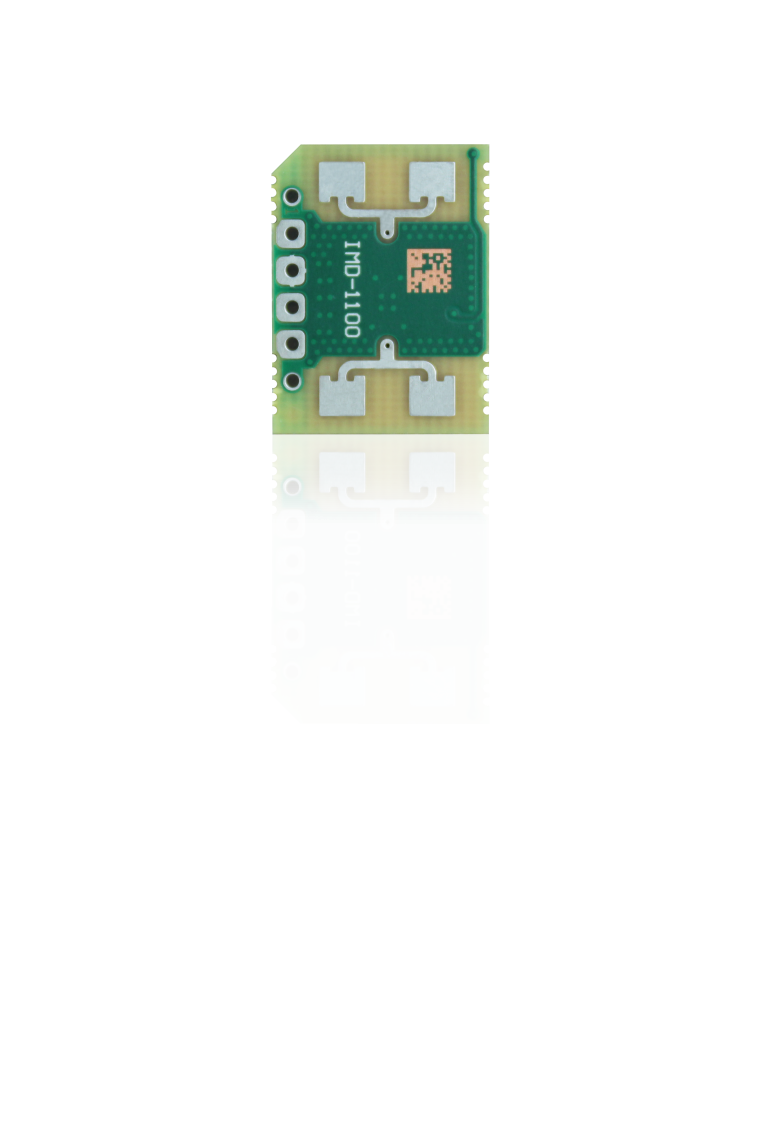
- Positive and negative technical characteristics of Radar and PIR
- Difference between PIR and Radar
- Progress in Motion Detection
- Radar Motion Detection for Intrusion Alarm
- Innosent Motion Detectors
Over the years, the demand for an efficient and convenient way to protect buildings increased. For most use cases, there is no way around motion detectors to prevent intrusions. They are aware of every single movement around the building and trigger an alarm when people come close to the building. These security systems have a deterrent effect. They put the intruders to flight or cause further security measures like video surveillance or transmitting the incident.
Positive and negative technical characteristics of Radar and PIR
| Radar | PIR |
| + more data | + detection of objects crossing at 90° angle to the sensor |
| + detection of movement frontally to the sensor | + very low-cost |
| + passes through materials | + little power consumption |
| + high range | – detection of movement frontally to the sensor |
| + multi-target capability | – difficulties with high outside temperatures |
| + weather- and light-independent | – heat-insulating clothing reduces likelihood of detection |
| – detection of objects crossing at 90° angle to the sensor | – limited range |
| – higher-cost | – no distinction between object types (person or animal) |
| – consumes more power | – weather-sensitive |
Difference between PIR and Radar
Passive infrared sensors (PIR) use heat radiation and detect movement based on body temperature. It measures changes of the thermal image of its environment over time. As a passive detection method, the sensors do not transmit signals but receive data from a heat-emitting target in motion. Stationary objects or still standing people cannot be detected.
Radar is an active measurement principle and uses electromagnetic waves in the high-frequency range. The sensor sends pulses and receives an altered reflection for analyzing the change in the response signal. Radar technology is not only used for motion detection, it can also locate targets within the detection range and determines additional information like speed, movement direction and distance.
As a result of the differences in operating principle, PIR and Radar come with different capabilities and challenges.
PIR is excellent at detecting living beings that move across to the sensor field and also can be used for measuring temperatures. The maximum range is typically 10 meters. The technology is extremely cheap and consumes very little power. Light sources similar to infrared and high temperatures cause detection problems.
Radar sensors for commercial use can have detection ranges of several 100 meters and output further object data. Advanced products allow the monitoring of stationary and moving objects in a three-dimensional environment over time. Also, low cost sensors do an excellent job in detecting objects or people moving frontally towards or away from it. Weather and heat conditions do not have an impact on the detection. However, the technology is more expensive and consumes more power.
Progress in Motion Detection
For many years, the question of which sensor technology fits best for an application was easy to answer. When searching for a cheap and uncomplicated motion sensor, PIR was the choice. For commercial intrusion detection and alarm systems the integrators often had only a low-budget. So they accept the possible troubles of PIR in outdoor applications. Radar was only used for more sophisticated functions.
But now radar sensors are tackling the low-cost segment. They became smaller and cheaper, but also offer more features. This development could disrupt the market of motion detection. Especially for intruder detection, radar convinces with additional functionality which make the application more efficient and reliable.
Radar Motion Detection for Intrusion Alarm
Between modern radar sensors and PIR, only a small price gap is left. This persuades security technology companies to leave behind negative presumptions from the past and consider radar detection for their alarm system.
So what can they expect from new radar devices? The sensors working under difficult environmental conditions like dust, dirt, rain, snow, heat or cold. It is possible to notice the presence and the movement of vehicles, animals or people. The determination of moving speed and direction and also the distance optimizes the detection efficiency. It allows to make individual adaptions to the use case scenario. This reduces false alarms and improves the performance of the security system.
Intrusion systems based on radar technology only record security-related events (and not curious neighbors or roaming animals). For example it is possible to sort out irrelevant events like passing cars. With configuration of the sensitivity small animals like cats can be filtered out, so they won’t trigger an alarm.
Innosent Motion Detectors
Innosent has been developing sensors for motion detection since it was founded in 1999. After their achievements in advanced security radar solutions, they also wanted to provide progressed radar devices for the low-budget market. With the latest radar product series IMD, the experts now offer modern technology for cheap prices.
One of the newest solutions is the IMD-1100 radar front end. This sensor is the smallest 24 GHz radar available in their portfolio, maybe even the smallest of its kind. The size is a game changer for many applications. It is so tiny, that it can be placed even behind a light switch, in a window frame, a wall or a door bell without being noticed by intruders. The efficient radar technology will not miss any intruders around the building.
More information about the product and radar technology you can find on the corporate blog at https://radar-blog.innosent.de/en













